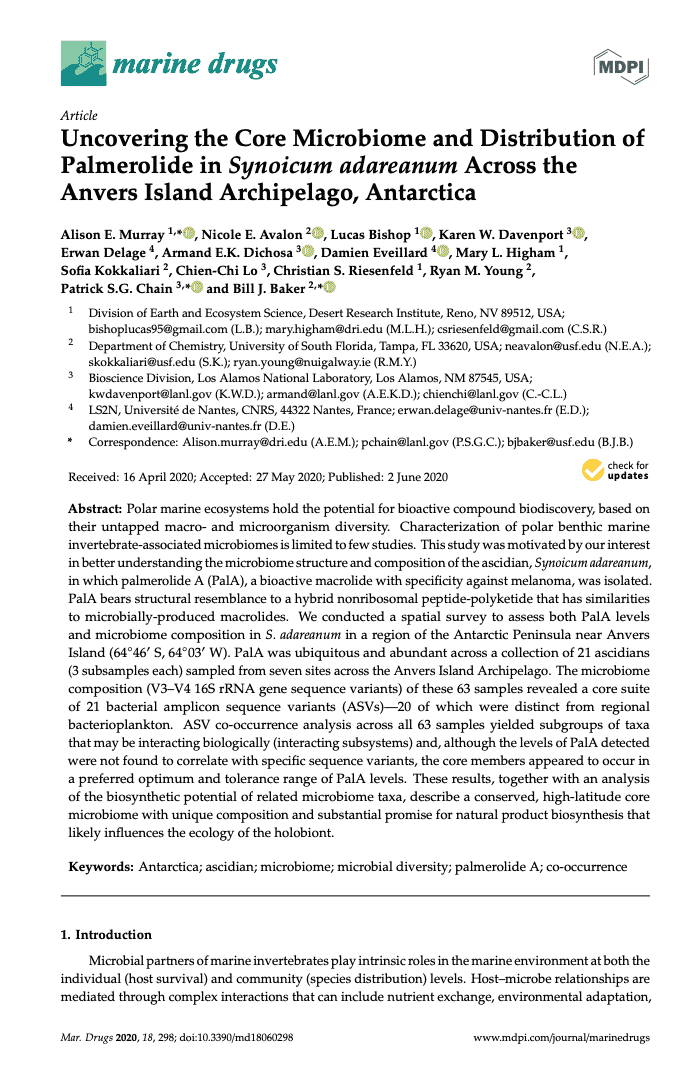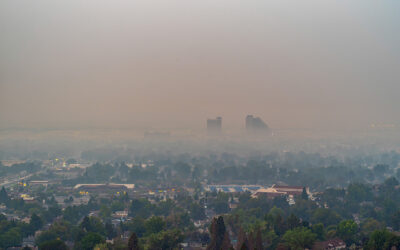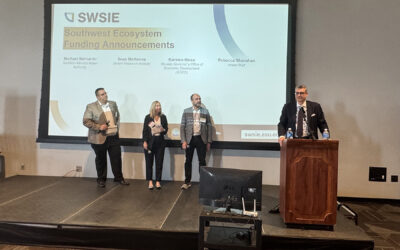New study reveals key information about the microbiome of an important anticancer compound-producing Antarctic marine invertebrate
RENO, NEV.
JUNE 25, 2020
Microbiology
Melanoma
Ascidians
Could the cure for melanoma – the most dangerous type of skin cancer – be a compound derived from a marine invertebrate that lives at the bottom of the ocean? A group of scientists led by Alison Murray, Ph.D. of the Desert Research Institute (DRI) in Reno think so, and are looking to the microbiome of an Antarctic ascidian called Synoicum adareanum to better understand the possibilities for development of a melanoma-specific drug.
Ascidians, or “sea squirts”, are primitive, sac-like marine animals that live attached to ocean-bottoms around the world, and feed on plankton by filtering seawater. S. adareanum, which grows in small colonies in the waters surrounding Antarctica, is known to contain a bioactive compound called “Palmerolide A” with promising anti-melanoma properties – and researchers believe that the compound is produced by bacteria that are naturally associated with S. adareanum.
In a new paper published this month in the journal Marine Drugs, Murray and collaborators from the University of South Florida, the Los Alamos National Laboratory, and the Université de Nantes, France, present important new findings measuring palmerolide levels across samples collected from Antarctica’s Anvers Island Archipelago and characterizing the community of bacteria that make up the microbiome of S. adareanum.
“Our longer-term goal is to figure out which of the many bacteria within this species is producing palmerolide, but to do this, there is a lot we need to learn about the microbiome of S. adareanum,” Murray said. “Our new study describes many advances that we have made toward that goal over the last few years.”
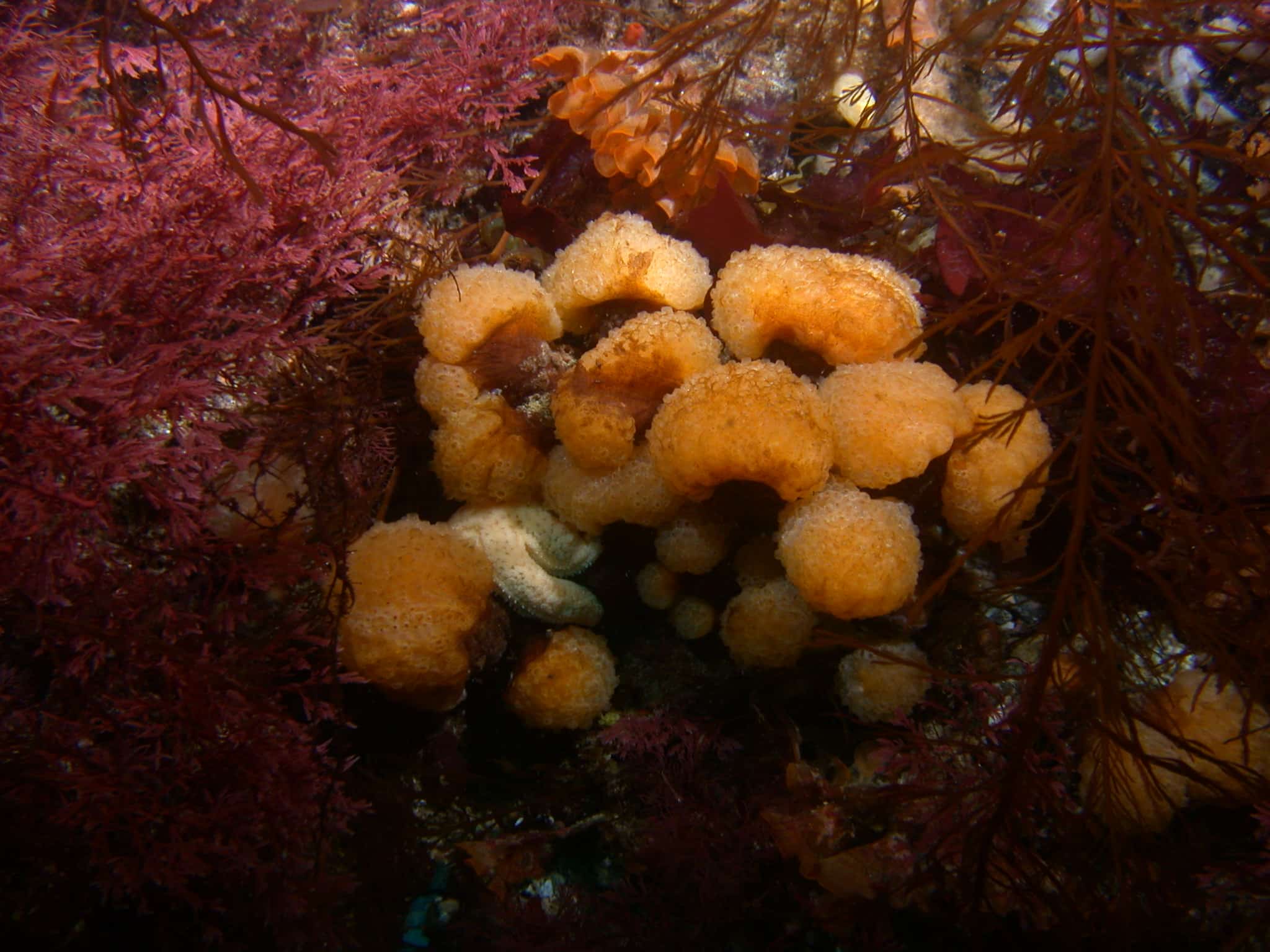
Synoicum adareanum: The Antarctic sea squirt, Synoicum adareanum at 80’ (24 meters) lives amongst the red algae, bryozoans and starfish on the seafloor. It is a non-motile benthic species that gets its nutrition from microorganisms and organic carbon in the seawater. Its microbiome hosts a suite of different microorganisms that can provide defenses against predation and infection in some cases. Tissues of this animal were found to contain high levels of a compound that is active against melanoma, which is thought to be produced by a member of the sea squirt’s microbiome.
Credit: Bill Baker, USF
In 2008, Murray worked with Bill Baker, Ph.D., of the University of South Florida, and DRI postdoctoral researcher Christian Riesenfeld, Ph.D., to publish a study on the microbial diversity of one individual S. adareanum. Their new study builds upon this research by characterizing the microbial diversity of 63 different individuals that were collected from around Anvers Island.
Their results identify a what the researchers call the “core microbiome” of the species – a common suite of 21 bacterial taxa that were present in more than 80 percent of samples, and six bacterial taxa that were present in all 63 samples.
“It is a key “first” for Antarctic science to have been able to find and identify this core microbiome in a fairly large regional study of these organisms,” Murray said. “This is information that we need to get to the next step of identifying the producer of palmerolide.”
Another “first” for Antarctic science, and for the study of natural products in nature in general, was a comparison of palmerolide levels across all 63 samples that showed the compound was present in every specimen at high (milligram per gram specimen tissue) levels, but the researchers found no trends between sites, samples, or microbiome bacteria. Additional analysis looking at the co-occurrence relationships of the taxa across the large data set showed some of the ways that bacteria are interacting with each other and with the host species in this marine ecosystem.
“The microbiome itself is unique in composition from other ascidians, and seems to be pretty interesting, with a lot of interaction,” Murray said. “Our study has opened the doors to understand the ecology of this system.”
From the assemblage of bacteria that the researchers have identified as making up the core microbiome of S. adareanum, they next hope to use a genomics approach to finally be able to identify which of the bacteria are producing palmerolide – an important and needed advancement toward the development of a melanoma treatment.
“It would be a really big deal to use this compound to develop a drug for fighting melanoma, because there are just so few drugs at the moment that can be used to treat it,” Murray said. “If we can identify the bacteria that produce this chemical, and with its genome understand how to cultivate it in a laboratory setting, this would enable us to provide a sustainable supply of palmerolide that would not rely on harvesting wild populations of this species in Antarctica.”
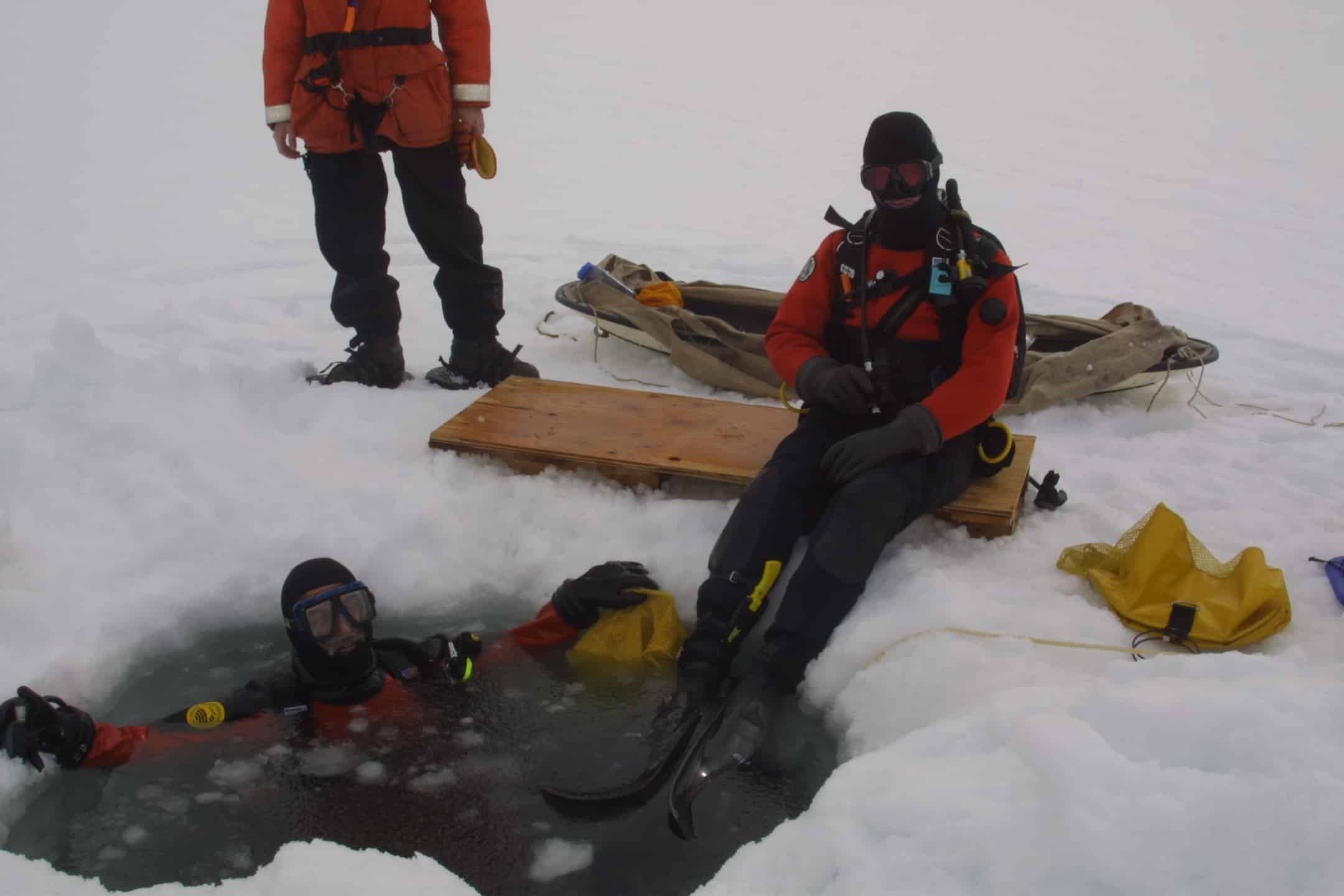
Anvers Island Antarctica: Samples for microbiome characterization were collected by SCUBA divers working on the sea ice off Anvers Island, in the Antarctic Peninsula. Diving through holes cut in the sea ice requires dry suites, and relatively short dive times. (photographed Prof. Bill Baker in the hole, and his graduate student Chris Petri suited on the sled).
Credit: Maggy Amsler
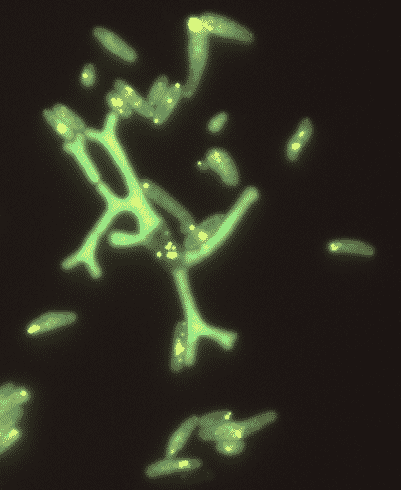
DNA-stained micrograph: Cultivation efforts led to isolation of a new bacterial species affiliated with the Pseudovibrio genus – a group known to produce bioactive compounds – this is the first cold-adapted member of this genus. This strain has unusual branching morphology (seen in the DNA-stained micrograph), and storage granules that appear yellow.
Credit: Eric Lundin, DRI
“It is a key “first” for Antarctic science to have been able to find and identify this core microbiome in a fairly large regional study of these organisms,” Murray said. “This is information that we need to get to the next step of identifying the producer of palmerolide.”
Additional information
The full text of the study, “Uncovering the Core Microbiome and Distribution of Palmerolide in Synoicum adareanum Across the Anvers Island Archipelago, Antarctica,” is available from Marine Drugs: https://www.mdpi.com/1660-3397/18/6/298/htm
This research was supported by the National Institute of Health, National Cancer Institute, and the National Science Foundation.
###
About the Desert Research Institute
The Desert Research Institute (DRI) is a recognized world leader in basic and applied interdisciplinary research. Committed to scientific excellence and integrity, DRI faculty, students, and staff have developed scientific knowledge and innovative technologies in research projects around the globe. Since 1959, DRI’s research has advanced scientific knowledge, supported Nevada’s diversifying economy, provided science-based educational opportunities, and informed policy makers, business leaders, and community members. With campuses in Reno and Las Vegas, DRI serves as the non-profit research arm of the Nevada System of Higher Education. For more information, please visit www.dri.edu.
Media Contact
Justin Broglio
Communications Manager, Desert Research Institute
775-762-8320
Justin.Broglio@dri.edu
@DRIScience
